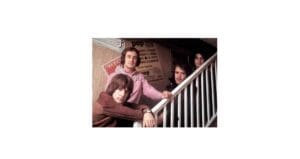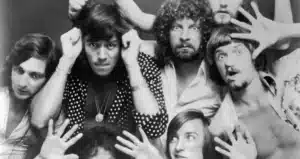The Moody Blues: Masters of Progressive Rock and Symphonic Sound
The Moody Blues are one of the most influential and pioneering bands in the world of progressive rock, known for blending symphonic orchestration with rock music. Their sound evolved from the psychedelic rock of the 1960s to the complex, symphonic rock that helped define the progressive rock movement in the 1970s. Formed in 1964, The Moody Blues have remained a landmark group, recognized for their innovative use of orchestral arrangements, conceptual albums, and introspective lyrics.1. Formation and Early Years
1.1 Formation in Birmingham
- The Moody Blues were formed in Birmingham, England, in 1964, originally as a rhythm and blues band. The original lineup included Denny Laine (vocals/guitar), Mike Pinder (keyboard), Ray Thomas (flute), Graeme Edge (drums), and Clint Warwick (bass).
- Initially, they gained popularity with their hit single Go Now in 1964, which was a part of their R&B-driven early period. However, the band was about to transition into something much more ambitious.
1.2 Transition to Progressive Rock
- By 1967, after several lineup changes, the band reinvented themselves and began incorporating classical orchestration, psychedelic elements, and more progressive rock influences. The arrival of Justin Hayward (guitar/vocals) and John Lodge (bass/vocals) solidified the lineup, marking the start of a new era.
- This period saw the group become more experimental, with a heavier emphasis on concept albums, synthesizers, and orchestral arrangements.
2. Key Albums and Milestones
2.1 Days of Future Passed (1967)
- Days of Future Passed (1967) is considered one of the most important and groundbreaking albums in the history of rock music. It was one of the first albums to fully integrate orchestral elements with rock music, blending the London Festival Orchestra with the band’s electric rock instruments.
- The album is a concept album that follows the progression of a single day, from morning to night, using symphonic music to enhance the themes of time, life, and existence.
- Key Tracks:
- Nights in White Satin (one of the band’s most iconic and haunting songs),
- Tuesday Afternoon (a whimsical, symphonic track that captures the band’s mix of pop and progressive elements).
2.2 In Search of the Lost Chord (1968)
- Released in 1968, this album marked the band’s continued exploration of psychedelic rock and progressive elements, incorporating more abstract themes like spirituality and inner peace.
- This was the band’s first full venture into progressive rock, incorporating sitar, flute, and other non-traditional instruments into their sound.
- Key Tracks:
- Ride My See-Saw (a song combining psychedelic and folk-rock elements),
- Legend of a Mind (a song inspired by the writings of Timothy Leary).
2.3 To Our Children’s Children’s Children (1969)
- To Our Children’s Children’s Children (1969) explores themes of space exploration and humanity’s place in the universe, reflecting the time’s growing interest in science fiction and space travel. The album also has strong influences from psychedelia.
- The album’s conceptual theme centers around the optimistic future of humankind, with an overarching narrative about advancement and hope.
- Key Tracks:
- Watching and Waiting (a meditative, atmospheric track),
- Out and In (a blend of psych-rock and symphonic music).
2.4 A Question of Balance (1970)
- In 1970, The Moody Blues released A Question of Balance, a more refined and cohesive work that continued their progressive rock style while exploring the balance between emotional and intellectual concepts.
- This album showcased the band’s ability to merge classical elements with rock instrumentation seamlessly and was also one of their most commercially successful albums.
- Key Tracks:
- Question (a symphonic rock anthem with a deep philosophical message),
- The Balance (a reflective track that captures the essence of the album’s theme).
2.5 Every Good Boy Deserves Favour (1971)
- Released in 1971, this album continued The Moody Blues’ exploration of symphonic rock, with a more dynamic and energetic sound compared to earlier works. The album’s themes include life, time, and the human experience.
- The album also included the London Festival Orchestra, adding to its orchestral depth.
- Key Tracks:
- The Story in Your Eyes (a fast-paced rock song with orchestral flourishes),
- After You Came (a dreamy, melancholic ballad).
2.6 Seventh Sojourn (1972)
- Released in 1972, Seventh Sojourn was The Moody Blues’ last album of the 1970s before they took a long hiatus. The album continues their philosophical and conceptual approach, and its themes focus on the cycle of life, emotional renewal, and spirituality.
- This album became one of the band’s most commercially successful, featuring some of their most popular songs.
- Key Tracks:
- Isn’t Life Strange (a reflective, soulful ballad),
- I’m Just a Singer (In a Rock and Roll Band) (an upbeat, rock-driven anthem).
3. Evolution and Later Years
3.1 Transition in Sound (Late 1970s-1980s)
- After their initial run of classic albums, The Moody Blues took a break in 1974 before returning in the early 1980s with a new, more radio-friendly sound.
- The band’s music shifted to incorporate more synthesizers and electronic production, aligning with the trends of the time but still retaining their trademark orchestral and philosophical themes.
3.2 Long Distance Voyager (1981)
- Long Distance Voyager (1981) marked a significant shift in sound with the incorporation of more synthesizers and keyboard-driven melodies, embracing the new wave style that was popular in the 1980s.
- Despite the changes, the album retained the band’s trademark blend of rock and classical music, and it was a commercial success.
- Key Tracks:
- Gemini Dream (a catchy, synth-driven track),
- The Voice (a reflective ballad with ethereal synths).
3.3 Later Albums and Continued Touring
- The band continued to release albums into the 1990s and 2000s, including Strange Times (1999) and December (2003), but their sound became more pop-oriented and radio-friendly as they aged.
- Despite these changes, The Moody Blues have maintained a loyal fanbase and continue to tour, performing both their classic hits and newer material.
4. Notable Members and Lineup Changes
4.1 Key Members
- Justin Hayward (guitar, vocals) – Known for his soaring voice and masterful songwriting, Hayward was one of the primary members who shaped the band’s sound. His contributions to the band’s conceptual work were significant.
- John Lodge (bass, vocals) – Lodge’s bass playing and lyrical contributions were integral to the band’s identity, particularly in later albums.
- Ray Thomas (flute, vocals) – A founding member, Thomas contributed to the band’s unique flute sound, adding an element of folk and classical to their music.
- Graeme Edge (drums) – The drummer and lyricist, Edge was essential to the band’s signature sound and style.
4.2 Influence of Mike Pinder
- Mike Pinder (keyboards) was a founding member and instrumental in developing the band’s use of synthesizers and melotron, which became key components of their sound, especially on albums like Days of Future Passed.
5. Influence and Legacy
5.1 Progressive Rock Pioneers
- The Moody Blues are considered pioneers in the progressive rock movement, particularly with their early integration of classical music into rock. Their orchestral rock style influenced many other bands in the progressive rock and symphonic rock genres.
5.2 Lasting Impact
- Their music has endured through decades, with albums like Days of Future Passed and A Question of Balance continuing to influence both classic rock and progressive rock circles.
6. Fun Facts About The Moody Blues
- The Mellotron: The band popularized the use of the Mellotron, a keyboard instrument that plays tape loops of orchestral sounds, on their album Days of Future Passed.
- The Name: The band’s name was chosen somewhat randomly, based on a blues theme they originally embraced in their early years.
- The Return to Success: The band made a remarkable return to success in the 1980s after initially struggling with commercial appeal in the late 1970s.
7. Discography Overview
Studio Albums
- Days of Future Passed (1967)
- In Search of the Lost Chord (1968)
- To Our Children’s Children’s Children (1969)
- A Question of Balance (1970)
- Every Good Boy Deserves Favour (1971)
- Seventh Sojourn (1972)
- Long Distance Voyager (1981)
- The Present (1983)
- Strange Times (1999)
- December (2003)




